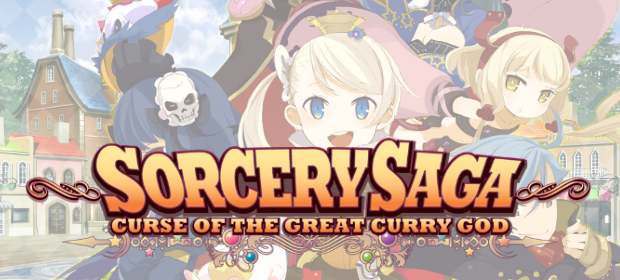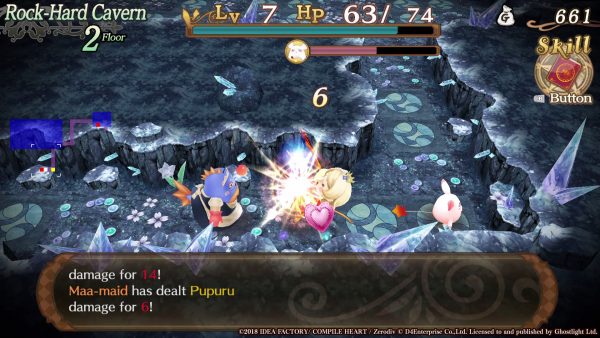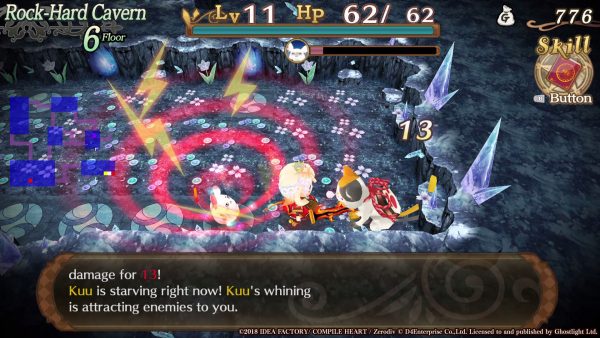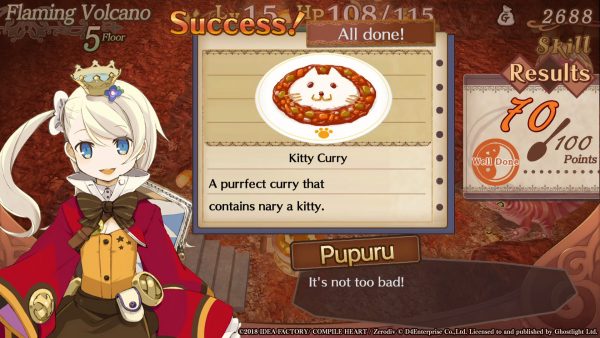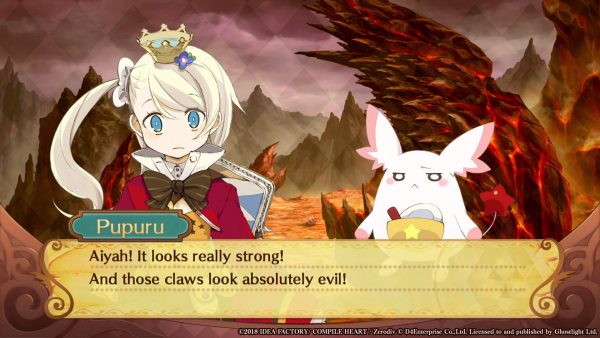Switch to: German
Earlier this year, Ghostlight brought the rather bad Omega Quintet to PC. The game’s many issues were further exacerbated by the performance issues the port introduced. Sorcery Saga: Curse of the Great Curry God manages to make a more positive impression on its move from the PlayStation Vita to the PC, but it’s still not without it’s share of problems.
Sorcery Saga’s story is fairly basic, though the curry theme does at least make it a little more interesting. Pupuru, a young curry loving student, discovers that her favourite curry shop is losing customers to new and far larger store. She decides that the only way to save the shop is to find ingredients needed to create the legendary magic curry. The story is serviceable, but doesn’t really go far enough with the curry theme. Any mention of curry could be replaced with something more generic and the story would be pretty much the same. Even ignoring the lack of focus on the main theme, each character has little to no development during the story. What you see when you first meet a character is likely the way they’ll still be acting by the time the credits roll. This extends to the comedy, which is OK to start with, but the novelty quickly wears off once you realise that you’re going to be subjected to the same jokes every cutscene.
Sorcery Saga is one of the simplest roguelikes we’ve played, with many of the genre’s usual mechanics simplified or removed outright. Like most roguelikes, each floor of a dungeon is randomly generated though this doesn’t lead to much real variety. Floors are rather bland since there are only two types of dungeon templates: Outdoor areas are made up of a few large rooms, while indoor areas feature a lot of smaller rooms. Dungeon themes don’t fare much better, as most areas are little more than boring woods and caves. After clearing the first main area, we had pretty much seen everything the game had to offer when it came to dungeon design.
Kuu, Pupuru’s eternally hungry pet monster, is one area where the developers have decided to simplify a typical roguelike feature for the worse. Instead of Pupuru having a saturation meter that needs to be filled to stop her from losing health, Kuu has a saturation meter instead. He eats literally any item you throw at him, though some items will cause the meter to go down instead. If the meter runs out, you cannot move to the next floor until Kuu is fed again. The problem here is that it’s so easy to feed Kuu that this mechanic has almost no real effect on gameplay, though this is not the only area where this is an issue.
We mentioned at the start of the review that Sorcery Saga doesn’t go far enough with its curry theme. Well, there was at least an attempt to use curry as a game mechanic. When exploring the world’s various dungeons, Pupuru can collect ingredients for making curry. Recipes are unlocked by bringing new ingredients to the curry shop, which can then be used out in the field. Each curry has its own beneficial effects, and the quality of the dish determines how long it lasts. The curry cooking system is thematically appropriate, but it suffers from the same problem as the rest of the game: The effect it has on gameplay is so miniscule that there’s little reason to use it. Curry quality is seemingly determined by the ingredients you use, but there’s no way to know how good an ingredient is without trial and error. Even if you happen to make something good, the buffs you can get are weak enough to make cooking not worth the effort.
While both of these previous systems were poorly thought out, neither of them are what truly ruin Sorcery Saga’s overall complexity. It’s the gear upgrade system that turns what could have been a bland but serviceable roguelike into a complete cakewalk. Levels do not carry over between dungeon runs, but Pupuru’s equipment and items do. Equipment consists of weapons and armour, that can be upgraded in town or with one of Kuu’s random abilities. The only requirements for upgrading equipment is that you have to use equipment of the same type (i.e. a sword to upgrade another sword) and a small monetary fee. This means that even the weakest equipment in the game can become extremely overpowered in a short amount of time, thanks to the abundance of money and items in dungeons.
By the end of the second dungeon our equipment was already strong enough to kill the bosses in two hits max, while regular enemies were barely doing any damage. If equipment was more costly to upgrade, or you had to use better items as the level of your gear increases, the game could have had some semblance of balance. But without any real restrictions in place, this system ruins any sort of challenge Sorcery Saga could provide. A side affect of this is that an already short game becomes even faster to complete, the main story taking roughly 6 hours from start to finish. There is an extremely long bonus dungeon after you defeat the final boss, but it does nothing to fix the game’s inherent difficulty problems.
At least the port itself doesn’t suffer from any major issues, running far better than the original Vita version ever did. Like many of Compile Heart’s games, the Vita release ran vary poorly and had trouble hitting even 30 fps. Sorcery Saga uses charming but simple 3D models, so the PC release easily manages to stay at 60 fps with no stuttering unlike Dark Rose Valkyrie and the aforementioned Omega Quintet. Graphics options are scarce, though this is par for the course when it comes to Ghostlight PC ports.
Conclusion
Sorcery Saga’s numerous balance issues make each dungeon laughable easy, and I was quickly losing interest after only a few hours. Only give the game a try if you’re an absolute novice when it comes to roguelikes, otherwise you’ll just end up disappointed.



